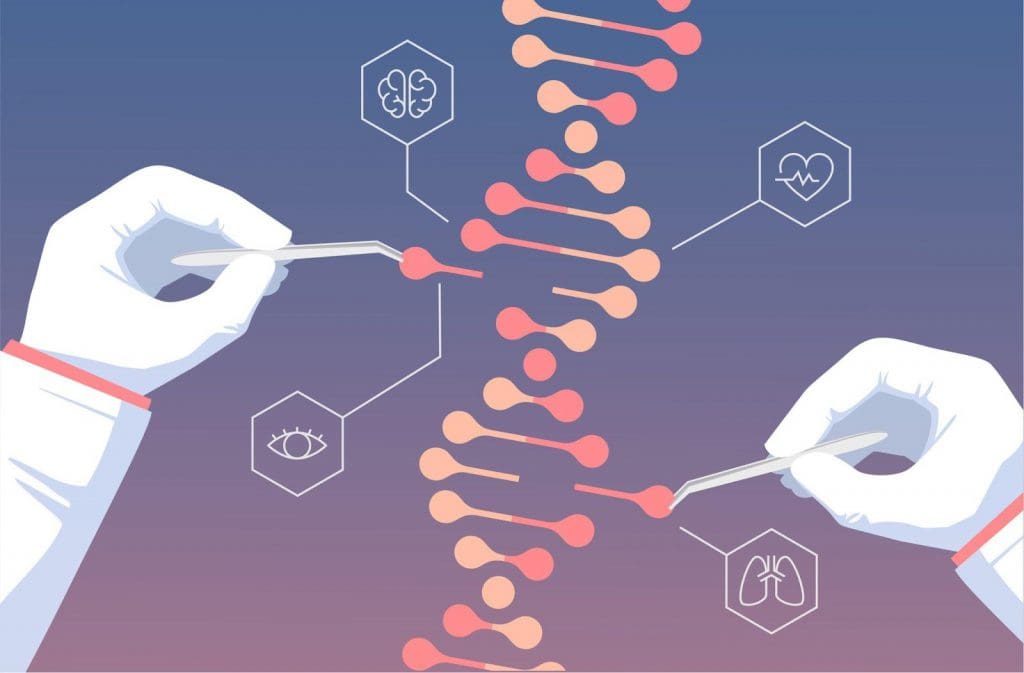
We all understand that lifestyle factors such as a lack of physical activity, excessive alcohol consumption, and smoking can negatively impact our health, but few of us know exactly how.
Recent research suggests that there are many more mechanisms at play than first realised. From your microbiome to the DNA of individual cells, your body can be impacted in a number of different ways, with effects that compound to cause chronic illness and disease, a decline in mental capabilities, and premature ageing.
On top of lifestyle choices, these effects can also be caused by environmental factors, or “insults”, from stressors that accumulate over a lifetime. These insults can be obvious—such as chemical and biological hazards, carcinogens, or water pollutants—and not so obvious—like particulate matter in the air you breathe, or even noise and light pollution in urban areas. The combined physiological effects of these insults on a person is known as the “Exposome”, meaning the complete set of exposures.

A 2021 paper from the LMU Institute of Epidemiology in Munich has detailed eight key ways your body can be affected by environmental insults and how they can work together to impact your exposome and compromise your wellbeing.
Reactive oxygen species (ROS) are essential for normal cellular signalling and regulation. However, an excess of these can lead to non-specific oxidation of proteins and cells which can wreak havoc on cell function. Environmental insults can cause increased levels of ROS as well as decreased antioxidant levels. Inflammation occurs when oxidation triggers cellular defence mechanisms and there are not enough antioxidants to combat the stress. The result of this in excess is cell death, inflammation, and acute organ damage.
Changes in DNA sequence due to mutation are typically considered harmful. These changes occur as cells divide and replicate over time and can be exacerbated by harmful environmental exposures. DNA mutations can cause abnormal cell behaviour and deterioration which have been linked to ageing and age-related diseases. Many environmental chemicals are known or suspected mutagens—or agents which cause genetic mutation—and they can accelerate the rate at which cellular deterioration occurs.

Epigenetics is the field of flexible changes in genetic behaviour, rather than genetic code. This has been discovered as a way of causing heritable adaptations which are not reliant on DNA mutations. One such change is the methylation of DNA, which facilitates switching genes on and off. In excess, this can cause abnormal gene expression associated with ageing and disease. Environmental exposure insults are taking epigenetic adaptations beyond normal expectations. Minerals such as arsenic, cadmium, and nickel have been found to increase DNA methylation and alter cellular function. Air pollutants, ambient temperature, and even humidity have been found to also have epigenetic effects.
Mitochondria are the engines that make your cells ‘go’, and if their DNA gets altered, this can cause all sorts of cell dysfunction and organ damage. This in turn leads to disease, chronic illness, and premature ageing. It has been found that exposure to air pollution—such as particulate matter, benzene, polyaromatic hydrocarbons, and toxic metals—can be especially damaging to mitochondria in the placenta while pregnant. This can notably affect brain development of the unborn child, causing lower IQ and potentially other intellectual differences.
The endocrine system is responsible for the many regulatory hormones at work throughout the body. Sleep-wake cycles, stress levels and mood, metabolism, and reproductive cycles are all dictated by hormonal signals.

Endocrine-disrupting chemicals (EDCs) are found everywhere nowadays, but most notably in plastics and food packaging. Bisphenols and phthalates are among the most well-known EDCs found in plastic, and while bisphenol-A (BPA) free plastic drink bottles have been a selling point for the last few years, BPA analogues have continued to be used in its place—to similar endocrine-disrupting effects. Microplastics also are among the most concerning facets of the exposure insults, due to their newly detected presence in the human bloodstream.
Chemicals govern the communication signals between cells. Chemical messengers can be easily disrupted by environmental insults, whether it’s caused by altered cellular DNA, oxidative stress, or EDCs. Ozone, a greenhouse gas in the atmosphere, has been found to disrupt lung growth regulation and can be a factor in lung cancer susceptibility. Ozone is produced when exhaust fumes, usually from vehicles or manufacturing, reacts with sunlight in the air. Air pollutants like exhaust fumes can also cause immune response signals in the bloodstream, which can cause excess inflammation as an immune system response.
Barrier organs—such as the skin, lungs, and gut—are responsible for keeping nasties from getting deeper into your body, but their effectiveness relies on a healthy microbiome—the collection of bacteria and microorganisms working with your body. Insults such as ultraviolet radiation and allergens can alter the skin microbiome by triggering an immune response, weakening it to other sources of illness and disease down the line.

Environmental exposures can have positive effects in some cases. Diversifying your microbiome, by exposure to viruses and microbes at a young age, can often enhance the immune system and prevent asthma effects and allergies.
The central nervous system (CNS) is the highway upon which electrical signals from stimuli reach the brain. These signals can travel as fast as 120m/s to send instructions to and from your extremities. Environmental insults can slow this signalling down, by causing alterations in neurons and shrinking of the brain. Known high-risk industrial pollutants have been proven toxic to the brain and nervous system, causing developmental impairment in children and mental degeneration in adults. Heat pollution is a less obvious exposure, which can come from more frequent and intense heat waves, and the effects of urban heat islands. The CNS works to regulate body temperature, and excessive heat pollution can cause CNS dysfunction resulting in exhaustion, heat-stroke, and a worsening of existing medical conditions.
With more time and research, effective therapies may become accessible—such as more effective antioxidants and anti-inflammatories, reversing DNA methylation, or reprogramming cells to effectively a state of “factory reset”. Efforts to reduce pollutants such as microplastics, heavy metals, exhaust fumes, and fine particulate matter from the environment are also important. On an individual scale, however, researchers recommend that maintaining healthier lifestyle choices is the best defence one can have against environmental insults.
At Chemwatch we look out for all sorts of exposure hazards, informed by our in-house chemical experts. We have a library of past webinars covering global safety regulations, software training, accredited courses, and labelling requirements. Keep an eye on our Webinar calendar for our upcoming Exposome series, as well as regular chemicals management, safety, and regulatory content.
Sources: